As difficult as it is to define any artist, some artists are more difficult to define than others. These are the artists that can’t seem to sit still, who will never be satisfied until they have tried their hands in every medium of art they can find. Khadijat Yussuff is one such artist. Although they largely work within the mediums of photography and multimedia art, it’s easy to see they possess many more artistic skills and they’re nowhere near done expanding upon them. We were able to speak with Yussuff to learn more about their photography, multimedia art pieces, and what inspires them across their many artistic projects.
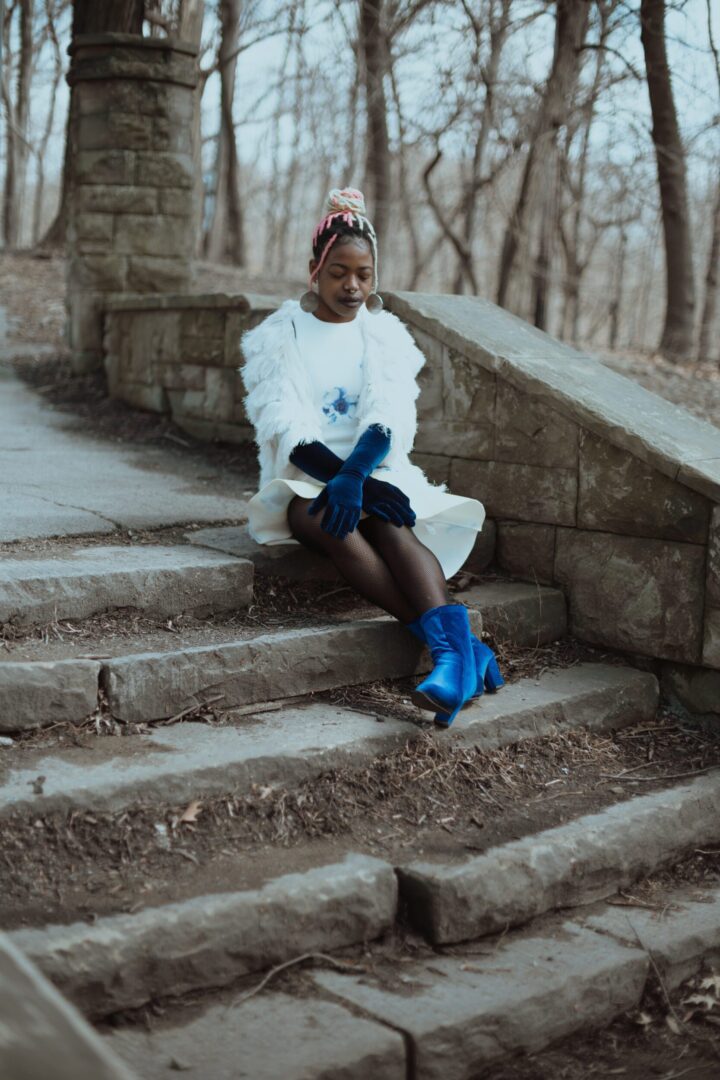
Tomorrow’s World Today (TWT): How did you get started with photography?
Khadijat Yussuff (KY): I think maybe [I got started] out of spite because in 10th grade, I had a photography teacher… and I got a B at the end of the semester. And his notes for me were that I didn’t have a vision. Something about that phrase really set me off for a couple of years. Three years later, I [thought], “I’m going to show that man”. I don’t remember his name or anything about him, I just remember that this comment really stuck with me. So I guess I just wanted to find my vision in some way.
In 2015 I ended up dropping out of college, and I needed something to occupy my time. So I got a camera on sale on eBay. I had a couple of different lenses and an SD card. And I started reaching out to people through Instagram and Facebook to see if they’d just be available for 30 minutes to do a quick photoshoot so I could practice. I ended up doing that for three or four years in a row.
TWT: How would you describe yourself as a photographer? How would you describe your work?
KY: I would say I’m definitely quite sensual. I love capturing the softer sides of things and objects and people. And I got into fashion photography for a few years, partially just to hone my skills and certain techniques. But I also just love meeting people, and I don’t tend to go out of my way to do so. It’s a very nice opportunity to be able to meet 100 people in 30 minutes at one fashion show and be able to document a third of them and then find them later on social media.
In terms of technique, I definitely love soft colors and very intimate portraits. I like close-ups. I’m getting into landscape more these days. I have a drone and practice drone photography and I think that also translates into my 3D work as well… I like to take my time in my art and in everyday life and be able to facilitate those experiences for other folks as well.
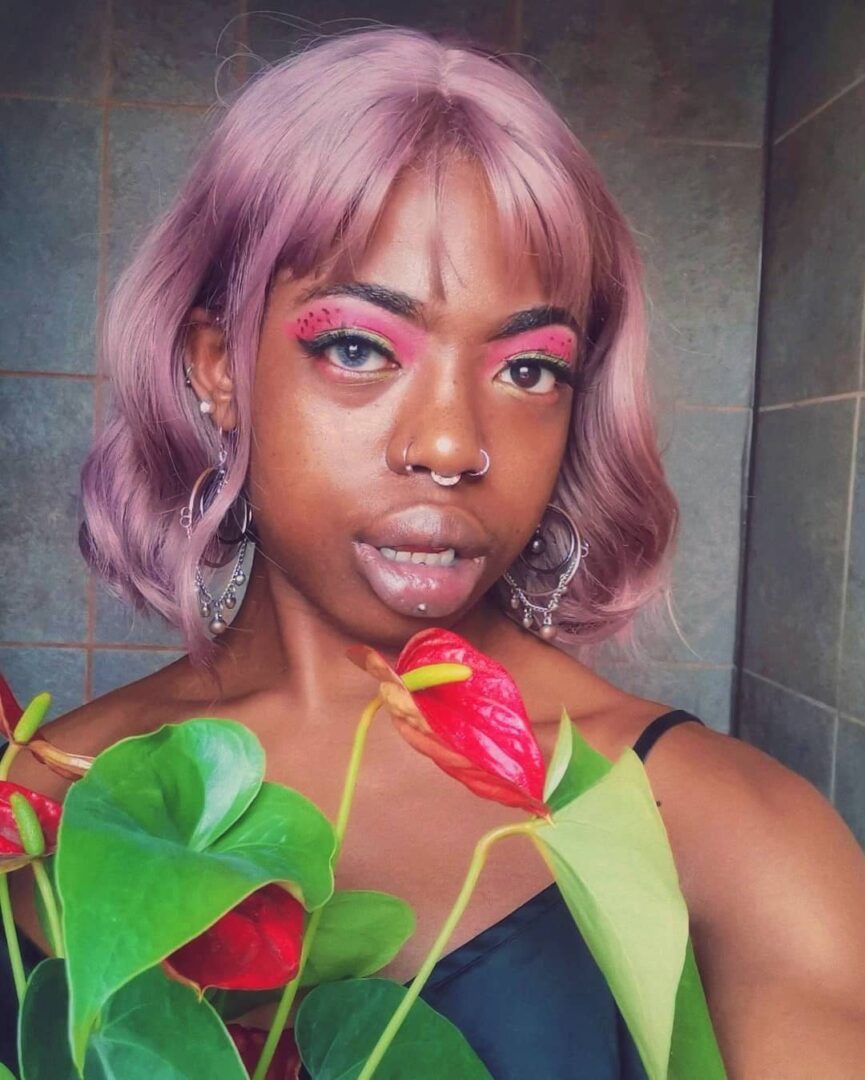
TWT: How has your work changed over time/how have you grown?
KY: I think when you start any new skill or any new industry, you kind of want to be industry standard. You want to put the work out that you see people getting hired with and it’s very difficult to break away from that…. There’s [an] inability to do your own thing because you won’t be making money. I think I’ve grown in the sense that I’ve been able to make a little niche for myself regardless of what it is that I’m doing. And I think that ties into the idea of mixing things and melding things, like with being a multimedia artist. Most projects are not one thing. So, for example, with photography, I’m also a stylist. In many cases, I was also the makeup artist and the location scout. But I’m also the retoucher and the editor. So it’s really nice to be able to have that freedom and be innovative enough that people are able to pay you to do whatever you want, which I think is a freelancer’s ideal goal or dream.
It’s nice to be able to have an idea and just do it, whether or not you’re going to make any money off of it, or whether or not you even think anyone’s going to see it or resonate with it. And then it’s always a very nice surprise when everyone on your Instagram is a big fan and when somebody reaches out to you because they’ve seen [your work]. So I think I’ve become freer in my work [and] less constrained by societal expectations. [That] is very hard, especially as a Black artist because most things are geared towards us expressing that one part of our identity. And it does get exhausting, so it’s nice to have other avenues and other channels of self-expression that don’t hinge on what certain institutions expect of you.
TWT: What is your favorite type of photography (portrait, landscape, etc.) and why?
KY: [My favorite type of photography is portraits]. I think it’s one form of not practicing body language, but kind of understanding people and living things and other objects relationally and with your body and not always necessarily verbally. It’s very hard to get a cat on the street or somebody’s dog to stay still for a photo. And a lot of the time they don’t understand that it’s happening, and it’s always nice to be able to approach people with that intention.
I think when it comes to specifically planned portraiture, I always like to send them a list of questions or things to think about during the photo shoot. And I like to have a conversation as the process continues because for me it’s not about the shot that necessarily looks like it would be in a magazine, but perhaps one that’s in between. Like when they’re shifting facial expressions or reacting very genuinely to a comment before changing their face again. Because taking the photo, it’s just very romantic in a sense. And, [despite having contracts], I also don’t like to make folks feel like there is a time limit on how they would like to express themselves… Having consistent control over the situation isn’t necessarily a goal for me, which I think might be a bit more uncommon. I’m okay with a bit of chaos and unpredictability, both when it comes to my work and when it comes to day to day interaction.
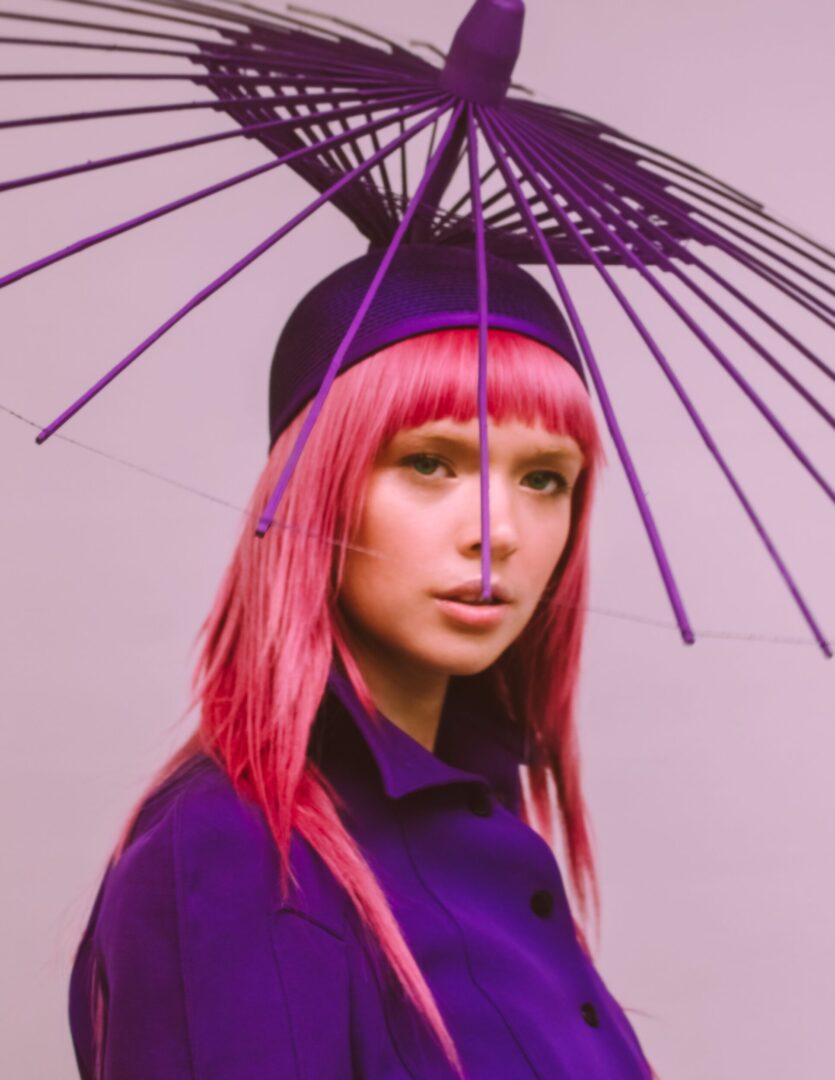
TWT: Do you have a favorite photo you’ve taken or one that particularly stands out to you? If so, why?
KY: They represent different things at different points of my career in education and even self-confidence. I would say maybe one of my favorite photos I would have probably taken was New York Fashion Week. It’s a photo of a model who was in America’s Next Top Model, I discovered from a friend who saw the photo – and she has pink hair. The outfit and the hat that she’s wearing is designed by Heidi Lee and she is a professor at NYU and won the National Design Award from the Met Costume Institute in 2012. And I really liked that photo because one of my favorite things to do, especially at Fashion Week, is to be able to get models staring directly at me, which is much harder than a lot of folks think it would be just because there are dozens if not hundreds of cameras around at any given time. So you have to stand out from the mass of professional photographers who they’ve seen before… who are vying for their shot and who are taller than you. I’m not very tall, so it’s definitely a bit of a struggle and a bit of a battle.
But when a model looks directly at you and takes that time and you have one maybe two seconds to adapt and capture the shot, that’s always very exciting. And I love that photo just because… it was a chaotic environment, but you can’t tell that she’s surrounded by dozens of people. She’s in a line [and] she looks like she’s alone… And I just thought that was just very beautiful and romantic and cute… Maybe from a more technical standpoint, it’s not the sharpest photo that’s ever been taken, but it is quite lovely. And I didn’t use any filters or any effects or anything. So for me, I was super impressed that I could capture a moment like that without any sort of external assistance or post-production assistance.
TWT: What piece of advice would you give to aspiring photographers?
KY: I would say that because I don’t really consider myself or I didn’t consider myself a photographer until other people started calling me one, I can’t say that I was ever aspiring to be…. I don’t want to be cliche and [say], have fun and do what makes you happy, which is also true. But I think maybe to find your vision. Maybe my photography teacher in 10th grade was right. Maybe I didn’t have a vision… I spent my entire life just being in school. I didn’t have the biggest bank of memories or life experiences at that age. And by the time I took up photography again and actually became a photographer, I’d been through a lot more. I wouldn’t tell people to suffer for your art so you can find content. I think [you should] find what you value out of life, out of yourself, in yourself, [and] out of your relationships with other people.
I like portraiture because I like taking walks [and] just using my cell phone to capture nice pieces of brick, animals that I saw on the street, or a flower hanging in a specific manner. I’m very invested in… beautiful things that grow again, and I think my work reflects that… Know what you value out of the work you do and the experiences you want out of it.
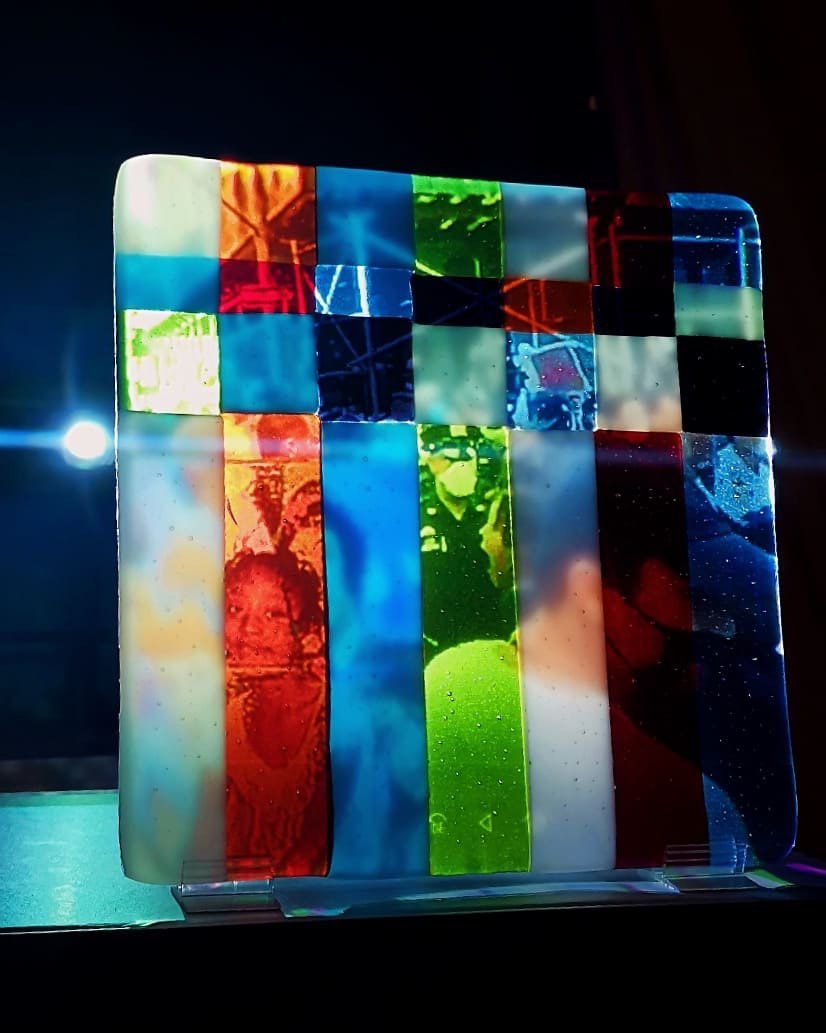
TWT: You also create multimedia art, could you describe your work?
KY: I would say I’m more of a professional tinkerer, which is really fun… But a lot of my multimedia art does combine at least two different practices. I’m also a textile artist, I learned how to knit when I was eight, so it’s been almost 20 years for me. I’ve learned other ways to use yarn and other textile materials… I like to combine video and sculpture. For example, I have a piece up at Assemble right now. They have their Hyperlocal exhibit up until the end of the month, and it highlights local artists. And I’m the only 3D media piece in there, [which is] very exciting. I made a video in After Effects and Premiere Pro and set up a projector. I also made a board of fused glass at the Pittsburgh Glass Center. [The piece is made] to look like a bad TV signal, [so] it goes past just being an eight-by-eight glass board and a video projection to being an experience and something that folks haven’t really seen before.
My multimedia work really does focus on varying skills and industries that maybe don’t get combined enough in the mainstream or in the commercial world. [For example], textiles and circuitry are largely being developed for large corporations. And I think maybe the average person doesn’t think that creating those things or innovating in those fields is something they can do because they don’t have millions of dollars or certain resources. But it helps me understand the way the world works, especially as it grows technologically. It helps me understand how societies are built and were built and have a deeper respect [for that process]… My work is very much focused on combining things in new and interesting ways that either I haven’t seen before or that helped me understand the technology that we take for granted, like VR. I think VR makes a bit more sense to me now that I know how to build environments. Now, I have a bigger appreciation for development teams.
TWT: What is your favorite multimedia art piece you’ve created? What inspires your work?
KY: I want to say it’s whatever I’m working on right now because I do try to make a conscious effort to outdo myself [in] certain disciplines and categories. But I would say I think creating a VR watch room, which is on YouTube. It was for a residency project with True Tea and an organization called Change Rape Culture. They had queer multimedia artists for a few months and paid us to create pieces… I made a 30-minute DJ set that you listen to in a 3D room that I built. And I thought that was probably a very ambitious project, it could take a few months. But I liked [the idea because] when we have a lot of VR experiences right now, it’s usually in the context of gaming or social media. And I thought it was very interesting to give somebody a VR experience where there isn’t necessarily anybody else there. You go from being alone in one “real” room, listening to this or having this experience, to being alone in a different virtual room that I made… It’s a good jump-off point for learning how to do other things, like learning game development or learning multi-person social media in virtual reality. But I hadn’t myself seen a VR project that was also just a DJ set that was also [basically] a television show for 30 minutes. Definitely super proud of that.
I would also say the rug that I’m working on right now, which is kind of a better version or 2.0 of the Sound Rug. It uses different components that I’m building and it’s larger. The pattern that I made for the rug is definitely more inspired by my culture because I’m Nigerian American. So there are certain patterns that we see all the time in fabrics and artwork. I’m excited to see how it plays in real life and how other people feel about it and maybe even turn it into an interactive experience where people can come up to touch the rug but also make music or add to a musical loop.
TWT: In regard to your sound sculpture, could you speak a little more about that and how you were inspired to create it?
KY: The one that is currently on my website is capacitive, meaning that it relies on specifically touch and electrical signals from your body. So it does have some spaces or some gaps in the textile loops that I did intentionally just to allow for the foil, which is what’s behind it. It’s foil and some wires and a microcontroller, but it allows that foil to read the electricity from your body and then conduct that information through the wires to the microcontroller. And there’s a buzzer at the back of it, which is where the sound is coming from. Once you’ve programmed the microcontroller, you can’t necessarily change the sound that comes out. Whereas the version that I made after that is a MIDI instrument, so you can plug it in as if you are playing Ableton Push or a Novation Keypad or any other plug-and-play instrument for music production or performance. Except it’s a rug and it’s fully functional… It doesn’t rely on bodily electricity, it relies on force. So I built some force-sensitive resistors into it. As the rug is now thicker, there are no gaps, which is a lot easier to mount. And because it uses force, it also doesn’t necessarily need to be touched with a body or like a human… So, for example, if you have a prosthetic and it’s made out of silicone, which maybe normally wouldn’t transmit electricity or generate electricity, you would still be able to play it. And it’s not much different than the way MIDI instruments are currently made, but they just don’t make versions that are also functional. Rugs are very important in a lot of musical spaces anyway, for sound dampening and preventing reverb. So it’s nice to have something that serves a triple purpose of being an instrument and also being tactile and also actually helping with your musical output.
TWT: What has been your biggest challenge as a photographer/artist? How did you overcome it?
KY: I would definitely say confidence. I think “artist” is a really great term because it’s very general. I think that for me, it took a while coming directly from an environment where you have to do your work, your homework or classwork, or take your test in a very specific manner. There’s not a lot of room in academia for interpreting things in your own way. And I think that learning that in life and art, there is no necessarily right or wrong answer. It’s okay to appreciate the things that you make or the experiences that you have for what they are and not what you wish they were. There are absolutely projects that I wish came out a little bit differently or look a little different or more marketable in certain ways. But I also really love them because I did my best. I learned how to do something new. I have a new skill set I can build off of, and I think that realizing that maybe you don’t need all the successes in the world to be a confident artist and to approach your work without feeling like you’re automatically at a disadvantage… Just knowing that you continue to put in that effort because you do enjoy it, whether or not it always pans out in the way you hope it will.
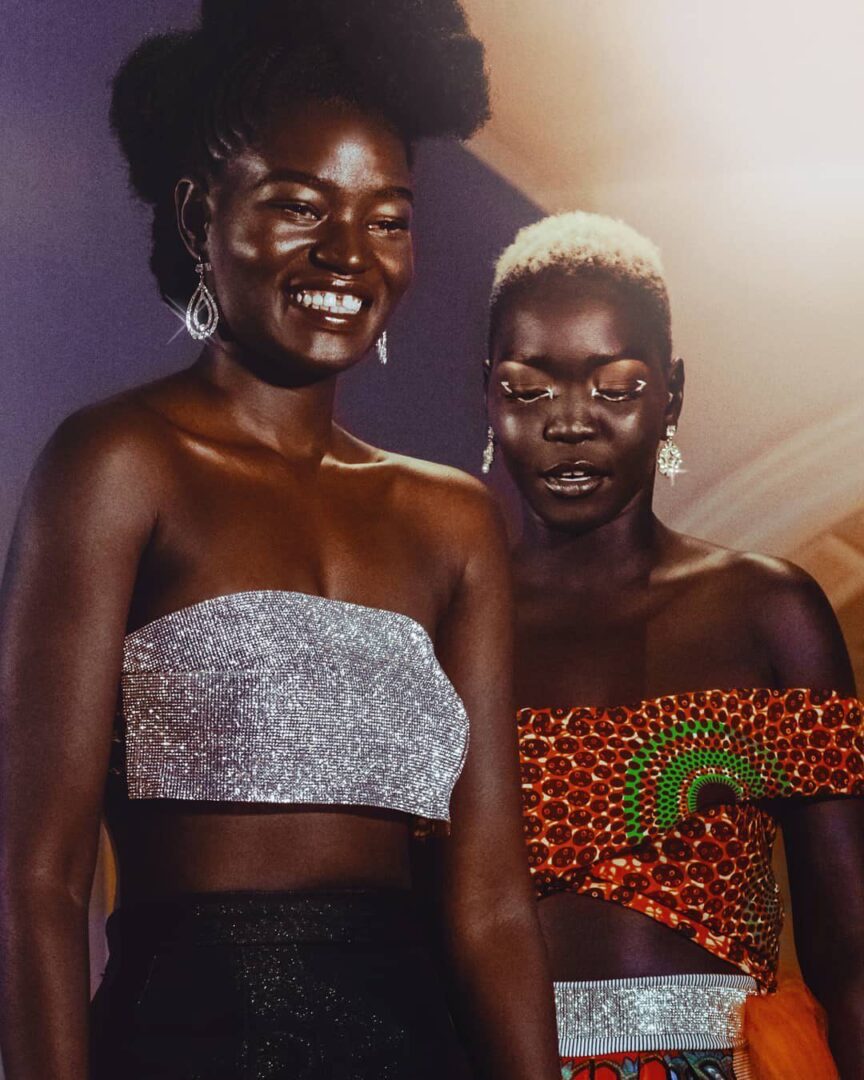
TWT: Who are your role models and why?
KY: I would definitely say all the Black people of marginalized genders on social media because the fact that they come across my feeds to begin with is really super cool. A lot of the time some of them are also my personal friends. And [because of] the way that we live, the quality of life that a lot of us have in real life versus the things that we’re being praised for on social media. The curation of our skills and marketing of our talent and labor. I feel like it’s unfortunate, but it’s also incredibly admirable that people do it continuously just for the love of the craft.
I would say in terms of work, I really love people like Thom Yorke. [I like] folks that combine professional talent in multiple areas, like Yorke who is a film producer of sorts while also being a very talented and well-respected musician. And so that makes him and his fans’ visual content that much better and that much more exciting because of that combination of skills… I think it just makes life more interesting and art more interesting. It also opens up folks’ eyes, even if they’re not underprivileged just to the possibilities of the world around them. And a lot of the time we feel like we don’t have a lot of control over our environment. Being able to see them in a new light and break them down in terms of understanding how to manipulate them. I think that is a beacon of hope of sorts that I really appreciate and look forward to.
TWT: What are your goals for the future?
KY: Definitely just to learn more [skills]. I like to do things for cinematic value. As one would say, I’m very much the kind of person who enjoys doing things to simply say they’ve done the thing. And I’m currently learning about glass, which is very exciting. I got a job at a local nonprofit that gives glass classes in education and also studio space. And they give us free classes as full-time employees. So I’ve been taking a few, making some new things, and it’s been going well. I think I’m definitely a fan of math skills. I’m also getting a certificate in full-stack engineering at the moment, just so I can turn some fun art stuff into an app pretty easily. And I also recently got accepted to be a Nintendo developer, so I will be using my 3D knowledge and know-how to manipulate VR environments. I’m going to try making some games in the upcoming year. Fingers crossed.
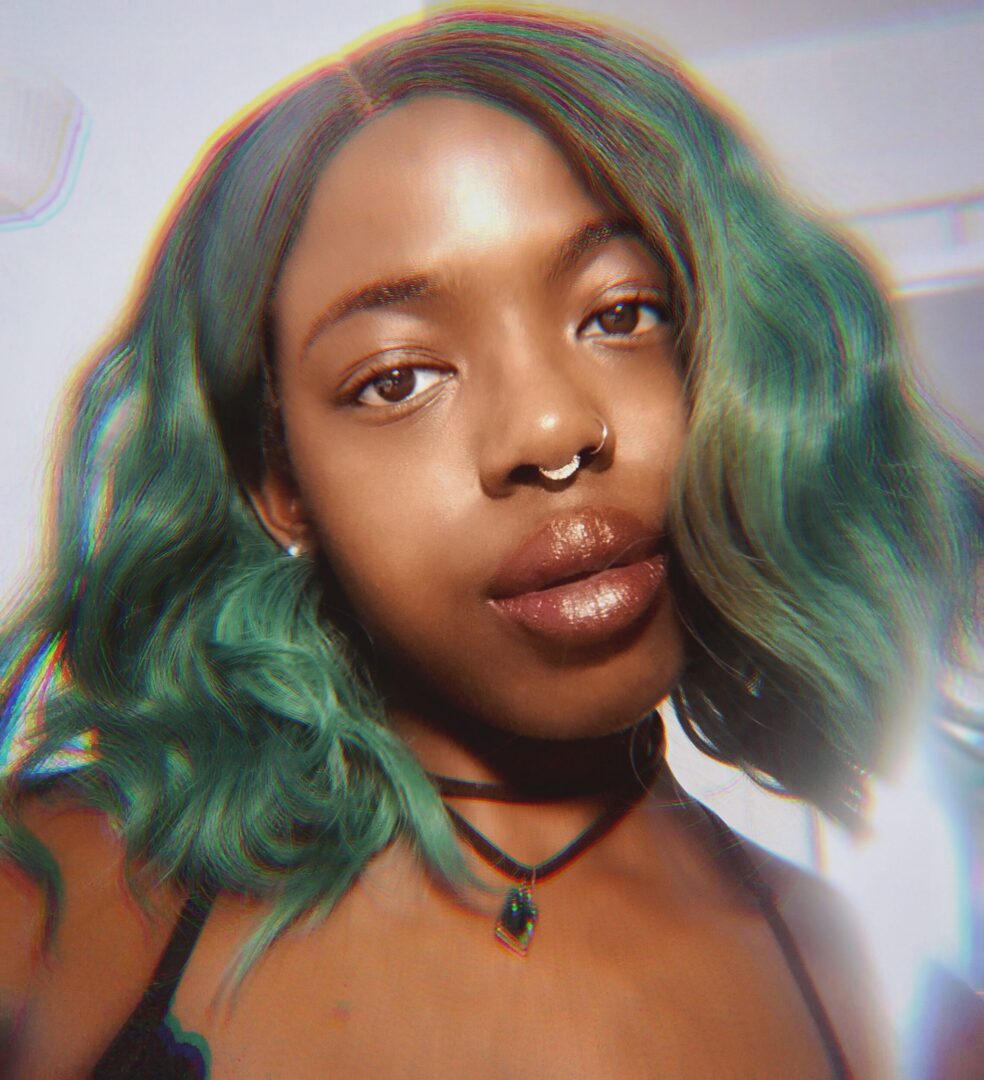
TWT: Do you have any advice for other artists who have a similar drive to learn many different artistic mediums?
KY: I like to think of art as one big task, so I won’t necessarily knit every day or I won’t sew every day. But I spend a third of my week working on one project, I edit a photo for two days and then I work on selling a top for another two days, etc. Give yourself time and space away from certain projects, especially if you’re getting frustrated. It also allows you to be able to see your project with new eyes. But I found personally that a lot of problems I have with one thing, the solution can be found in a different medium. And it may not be as obvious… You’ll see the way that your approaches to different media do change because you can’t treat everything exactly the same. You can’t have the same level of physical force for example, with glass as you would with a rug. And you wouldn’t think so because they’re both fragile in different ways.
I think the drive shouldn’t be wanting to be the best at something, which is also a very valid goal. But [rather] just understanding something, being able to communicate with an entity. And if that entity is drawing or sculpture or what have you, [it’s about] being able to communicate with yourself and with your art form and with your materials and with your tools nonverbally. Because your sewing machine is not going to respond to you yelling at it. But yeah, just having that patience and understanding, not only with the thing you’re working on but with yourself. It’s more meditative, like self-love. I think that we [also] get a little bit lonely sometimes when we want to do things or want to learn things or want to be very good at things. Just making sure that you have a community of people supporting you and knowing that you have that support regardless of the outcome is very important.
For more information about Khadijat Yussuff and their projects, visit http://www.khadijat.com/ or follow them on Instagram: @khadijat.yussuff, @sensual_asexual, @khadijat.vr.
Discover the World of Creation, and uncover the history of ancient painting, calligraphy, and pottery.







